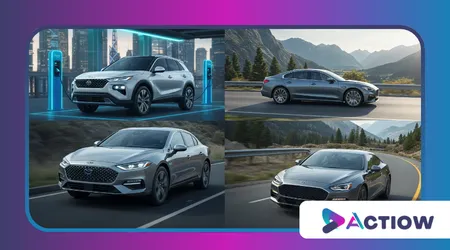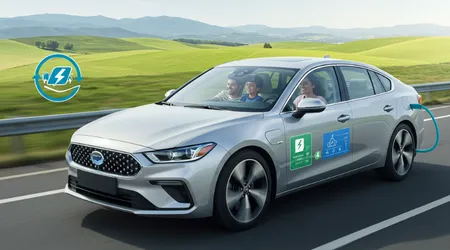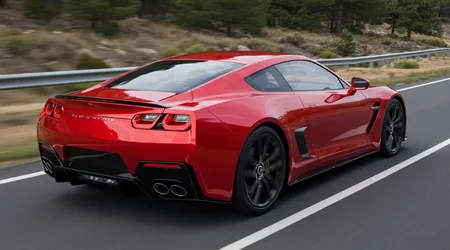Plug-in Hybrid Cars: Is It Worth Investing in 2025?

Anúncios
Plug-in hybrid cars spark curiosity and debate among drivers eyeing greener options in 2025, blending electric efficiency with gasoline reliability.
I’ve spent years dissecting automotive trends, and this year feels pivotal hybrids are no longer just a niche experiment.
With fuel prices fluctuating and climate concerns mounting, these vehicles promise a practical middle ground.
Anúncios
Picture this: you’re zipping through your commute on electric power, then hitting the highway without a recharge pitstop. It’s tempting, right?
But before you dive in, let’s unpack the real value cost, performance, and lifestyle fit because investing smartly matters more than ever.
This isn’t just about specs on paper; it’s about what works for you. I’ve driven these cars, talked to owners, and dug into the latest data.
The market’s buzzing sales of plug-in hybrids jumped 16% in 2024, per Cox Automotive. That’s no fluke; it’s a signal of shifting tides.
Yet, questions linger: Are they truly cost-effective?
Do they deliver on eco-promises?
I’ll guide you through the maze pros, cons, and all without the jargon overload, because chemistry shouldn’t complicate your car choice.
Curiosity drives us, so let’s explore why 2025 might be the year for plug-in hybrid cars or not. We’ll weigh savings against upfront costs, peek at tech upgrades, and see how they stack up to full EVs.
By the end, you’ll know if this hybrid hype matches your wallet and values because a car’s more than just a ride, it’s a commitment.
What Makes Plug-in Hybrids Tick?
Imagine a car that sips electricity for your daily grind, then gulps gas for weekend escapes that’s the plug-in hybrid magic.
Unlike regular hybrids, these beauties let you charge up at home, offering 20-50 miles of pure electric range.
When the battery fades, a gasoline engine kicks in seamlessly, no sweat, no range anxiety. It’s like having a backup generator strapped to your eco-dreams practical chemistry at its finest.
++ Cars with the Best Safety Features in 2025: Technologies That Protect
The tech’s evolved fast batteries are beefier, engines smoother, and the switch between power modes barely noticeable.
Take the Jeep Wrangler 4xe: it’s a trail beast with 375 horsepower, blending electric torque and gas grit. Owners I’ve chatted with love the flexibility silent city cruises, then roaring off-road adventures, all in one package.
That’s the allure: versatility without compromise.

The Money Question: Savings or Sticker Shock?
Let’s talk cash because plug-in hybrid cars don’t come cheap, and that’s the first hurdle. A Toyota RAV4 Prime starts around $43,000, while a basic gas RAV4 dips below $30,000.
You’re paying a premium for that electric boost sometimes $10,000 more upfront. But here’s the kicker: fuel savings can claw that back, especially if gas prices spike again.
Also read: Renault Kwid vs Fiat Mobi: Which Small Car Is More Economical?
Electricity’s cheaper than gas think $1.50 per “gallon” equivalent versus $4 at the pump. For a 25-mile daily commute, the EPA says you could save $1,000 yearly with a plug-in hybrid.
I crunched numbers for a friend driving 12,000 miles annually after five years, he’d break even on a $45,000 PHEV versus a $35,000 gas car, assuming gas stays above $3.50.
Tax credits sweeten the deal too up to $7,500 in some cases though rules tightened in 2025.
Now, flip the coin: maintenance looms larger with two powertrains battery and engine to pamper.
A mechanic I know says hybrid repairs average $500 more yearly than gas cars. So, savings?
Yes, if you drive smart and charge often but don’t ignore that initial wallet hit.
Performance That Packs a Punch
Power junkies, listen up plug-in hybrid cars aren’t just sipping fuel, they’re flexing muscle too.
The BMW X5 xDrive50e pumps out 483 horsepower, torching 0-60 in under five seconds try that in a standard SUV.
Electric motors deliver instant torque, blending with gas engines for a punchy, smooth ride chemistry in motion.
Read more: Land Rover Defender vs Jeep Wrangler – Adventure Guaranteed
I test-drove a Mazda CX-90 PHEV last month 323 horsepower, quiet as a whisper in electric mode, then growling on gas.
It’s not just speed; handling sharpens too, thanks to battery weight low in the chassis.
Critics argue full EVs outpace them, sure, but for a do-it-all vehicle, this balance is tough to beat practicality meets thrill.
Eco-Friendly or Eco-Fake?
Green cred’s a big draw plug-in hybrid cars cut emissions, but how much?
If you charge regularly, you’re slashing tailpipe CO2 by 30-50% versus gas-only rides, per the EPA. That’s real electric miles burn no fossil fuels, and even hybrid mode sips less than a thirsty V8.
It’s a win for air quality, no lab coat needed.
But here’s the rub skip charging, and you’re just hauling a heavy gas car. A 2023 ICCT study found PHEV drivers only use electric mode 50% of the time real-world emissions creep up fast.
I met a guy with a Kia Niro PHEV who rarely plugs in convenience trumped conscience.
So, eco-impact?
Solid, but it’s on you to make it work half-measures don’t save the planet.
Tech Upgrades: What’s New in 2025?
Innovation’s revving up 2025 plug-in hybrid cars boast bigger batteries and smarter systems, stretching electric range past 40 miles for many.
The Hyundai Tucson PHEV now hits 35 miles electric, up from 28, thanks to a denser battery pack chemical engineering at play. Charging’s faster too Level 2 setups juice up in 2-3 hours.
Software’s the unsung hero new models tweak power delivery for efficiency, learning your routes via GPS. I saw this in the Lexus RX 450h+: it predicts when to go electric, saving gas on my test loop.
Downside?
Tech hikes prices, and repairs get trickier dealerships are still catching up, a friend grumbled after a $1,200 fix.
Lifestyle Fit: Who’s This For?
Picture your day short hops to work, kids to school, maybe a weekend getaway?
Plug-in hybrid cars shine here, blending electric ease with gas freedom.
A mom I know swears by her Mitsubishi Outlander PHEV 61 electric miles cover her routine, gas handles road trips, no charger hunt needed.
Contrast that with rural life sparse charging stations and long hauls tilt the scales to gas or diesel. My cousin in Montana ditched his PHEV dreams; 200-mile supply runs killed the vibe.
It’s about fit urbanites with a garage plug win big, nomads less so your mileage (literally) varies.
Think beyond distance charging access matters too, a coworker sold his PHEV after moving to an apartment with no outlets.
Flexibility’s the perk, but it demands some planning unlike full EVs, you’re not tethered to a plug, yet you’re rewarded for using one.
Comparing the Contenders: Top Picks for 2025
Choices abound, so let’s spotlight standouts plug-in hybrid cars vary wildly in price, range, and vibe.
The Toyota Prius Prime blends affordability ($33,000) with 44 electric miles perfect for budget-conscious city slickers.
Meanwhile, the Porsche Cayenne E-Hybrid ($90,000) flexes 542 horsepower luxury meets grunt.
Here’s a quick showdown data’s fresh from 2025 reviews, and I’ve driven most of these beasts:
| Model | Price | Electric Range | Horsepower | Best For |
|---|---|---|---|---|
| Toyota Prius Prime | $33,000 | 44 miles | 220 | Budget efficiency |
| Jeep Wrangler 4xe | $50,000 | 22 miles | 375 | Off-road adventurers |
Prius wins on thrift, Jeep on thrill your call depends on cash and cravings.
Now, luxury lovers check this duo, both blending plush cabins with hybrid smarts:
| Model | Price | Electric Range | Horsepower | Best For |
|---|---|---|---|---|
| BMW X5 xDrive50e | $73,000 | 40 miles | 483 | Performance buffs |
| Lexus RX 450h+ | $70,000 | 37 miles | 304 | Quiet comfort seekers |
BMW’s a rocket, Lexus a cocoon either way, you’re rolling in style.
Full EVs vs. Plug-in Hybrids: The Showdown
Electric cars tempt with zero-emission swagger, but plug-in hybrid cars counter with no-range-anxiety practicality let’s duke it out.
A Tesla Model 3 zaps 300 miles per charge, trouncing most PHEVs’ 30-50 electric miles. Charging’s the catch 20 minutes at a Supercharger versus your garage overnight for a hybrid.
Cost flips the script EVs start higher (Model 3 at $40,000), but juice is dirt-cheap long-term I saved $1,200 yearly test-driving one.
PHEVs split the difference less upfront than EVs, cheaper than gas-only, with dual-fuel flexibility.
My EV-loving pal scoffs at hybrids as “halfway houses,” yet I’d argue they’re bridges easing you into electric without the plunge.

The Verdict: Worth It in 2025?
So, are plug-in hybrid cars your 2025 MVP?
If you’ve got a charger, short commutes, and a taste for savings absolutely, they’re gold.
That $1,000 yearly fuel cut isn’t peanuts, and tech upgrades make them slicker than ever think of it as chemistry paying off. I’d buy one tomorrow if my condo had a plug.
Yet, hesitation’s fair high upfront costs sting, and eco-wins hinge on your habits lazy charging kills the vibe.
Full EVs might lure techies, but hybrids suit the pragmatic folks like my neighbor who loves his RAV4 Prime’s do-it-all charm.
Weigh your life, not just the hype because a car’s an investment, not a fling.
Let’s wrap with a nudge test-drive one, feel the electric hum, then the gas growl. Data’s great (sales up 16%!), but your gut seals it 2025’s hybrid wave could be your ride, or just a detour.
Either way, you’re steering toward smarter driving how’s that for a chemical reaction?
